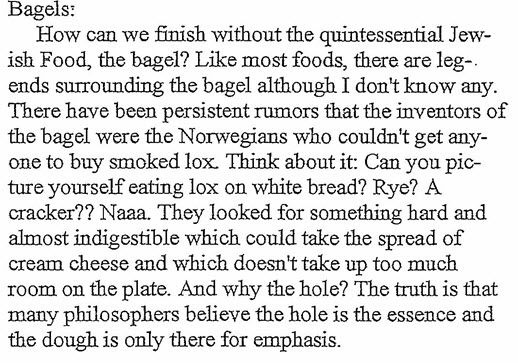  |
BagelsA bagel (also spelled beigel, Polish: Bajgiel) is a bread product originating from Poland, traditionally shaped by hand into the form of a ring from yeasted wheat dough, roughly hand-sized, which is first boiled for a short time in water and then baked. The origin of the bagel is up for debate, although it seems to have early taken a foothold in Poland. The first printed mention occurs in Krakow, in 1610 in a list of community regulations that stipulate that bagels are to be given to pregnant women. (Interestingly, given the bagel's association as a 'Jewish' food, there is no mention of religion in this regulation-apparently Christian women ate bagels as well). Others support the theory that an Austrian baker created a stirrup (or 'beugal') made out of dough to give to the King of Poland in 1683, in thanks for his help in defeating the Turks, and in honor of his great horsemanship. (Other German variations of the word are: 'beigel', meaning 'ring', and 'bugel', meaning bracelet.) Despite being popular in Europe among the Jewish residents, it is in America that the bagel becomes widely popular, especially in Chicago and New York. The next bagel breakthrough came in 1872, with the making of cream cheese. A common breakfast among commuters, bagels stand alone as the only bread that is boiled before it is baked, providing chewiness instead of brittle crumbs. Yeast dough is shaped into rings, allowed to rise, then briefly tossed into vigorously boiling water for a few seconds. Then it is baked, where the prior boiling creates a chewy texture. Those that like a bit of gloss on the crust can brush them with sugar water, the traditional method, or egg, a more modern method abhorred by purists.
 |